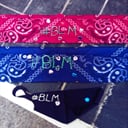No one who appeared before the Spanish Inquisition was ever tortured.
Every court procedure in Europe during the time of the Spanish Inquisition used torture as a method of obtaining the truth. The Inquisition was no exception. Although the inquisitors and their assistants were forbidden to permanently damage the accused or to make them bleed, the tribunal personnel had a wide range of tortures available to them, and they employed those.
It is said that the torturers were careful and restrained, and only tortured to find the truth, not for sadistic pleasure; however, those who were tortured would likely fail to see that distinction.
The inquisitors were permitted to bind the wrists of the accused behind their backs and hoist them off the floor to hang from the rafters. Occasionally, they attached weights to the accused's ankles and then lifted and dropped them, damaging the arms and legs. They also were allowed to put a cloth over the victim’s mouth and pour water over it, in a form of ancient waterboarding. But the go-to torture device was the rack, on which the victim was placed face up, hands and feet tied to a mechanism that stretched the body in opposite directions.
In 1815, priests who administered the Spanish Inquisition in Spain’s North American territories tortured a man named Cungagnaq, an Aleutian who was baptized into the Eastern Orthodox religion and took the name Peter the Aleut. The victim died and was canonized as St. Peter the Aleut. He is also known as the Martyr of San Francisco and the Protomartyr of America.
More Info:
en.wikipedia.org















